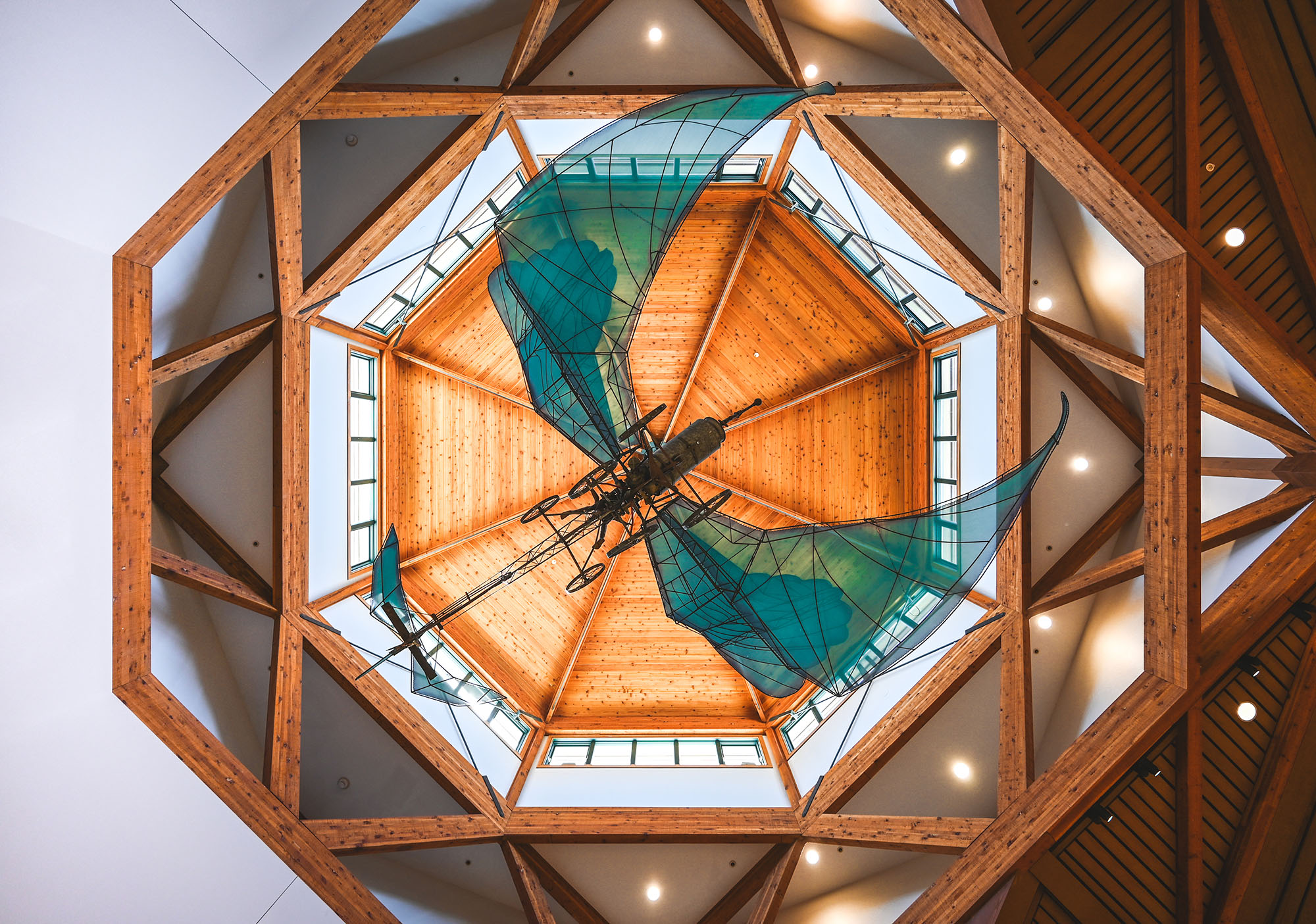The Butterfly Biosphere at Thanksgiving Point’s Water Tower Plaza is an experience unlike anything in the state of Utah! This 40,000 square foot venue is home to over a thousand butterflies from around the globe. In addition to dozens of species of butterflies, it also has 20 species of tarantulas, beetles as big as your fist, and many more creepy-crawly friends. The project consisted of renovating an existing retail center to become an insect centered interactive experience with the main exhibit space being a glass butterfly enclosure.
The two-story exhibit space allows for exhibits that are not limited in size or scale. As you shrink to the size of a bug in one area, you can also explore insects on a micro-level in another. The built environment within reflects the early concept of “Look Closer.” Mosaic tile murals and other material selections play on scale and graphics.
The experience within the butterfly enclosure is unique in that visitors can experience the tropical environment from multiple vantage points. Visitors can explore around flowering hillsides and walk over the top of the waterfall and pond. Each space provides unique views of the experience and allows you to see butterflies in various microclimates. The project is at the center of Thanksgiving Point and has provided a transformation of the visitor experience.
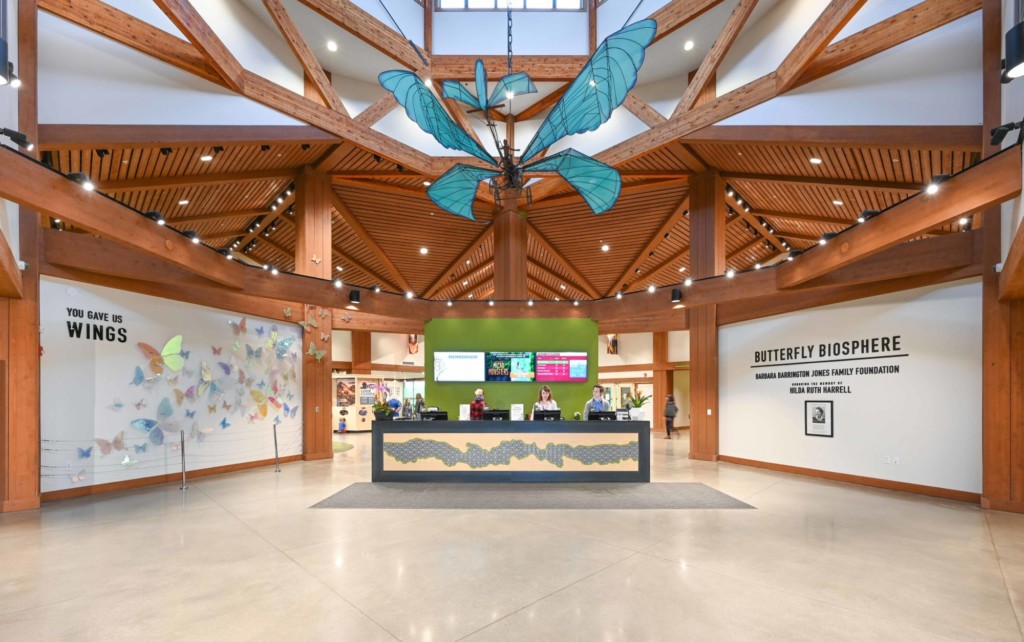
All Wings On Deck
Keeping the wood beams and ceiling paneling from the existing space (which is now the reception and ticketing area) the natural material design language was carried into the renovated space for continuity. The ‘You Gave Us Wings’ donor wall in the reception area was contracted with a local art glass artist and his studio for the production of the iridescent glass butterflies in varying sizes.
Kids Play Zone
To accommodate a two-story interactive play zone, called the ‘Costa Rica Climber,’ which abuts the administration offices on the second level of the existing structure, acoustical isolation and separation not only during construction but building operation had to be examined and became a critical design consideration.
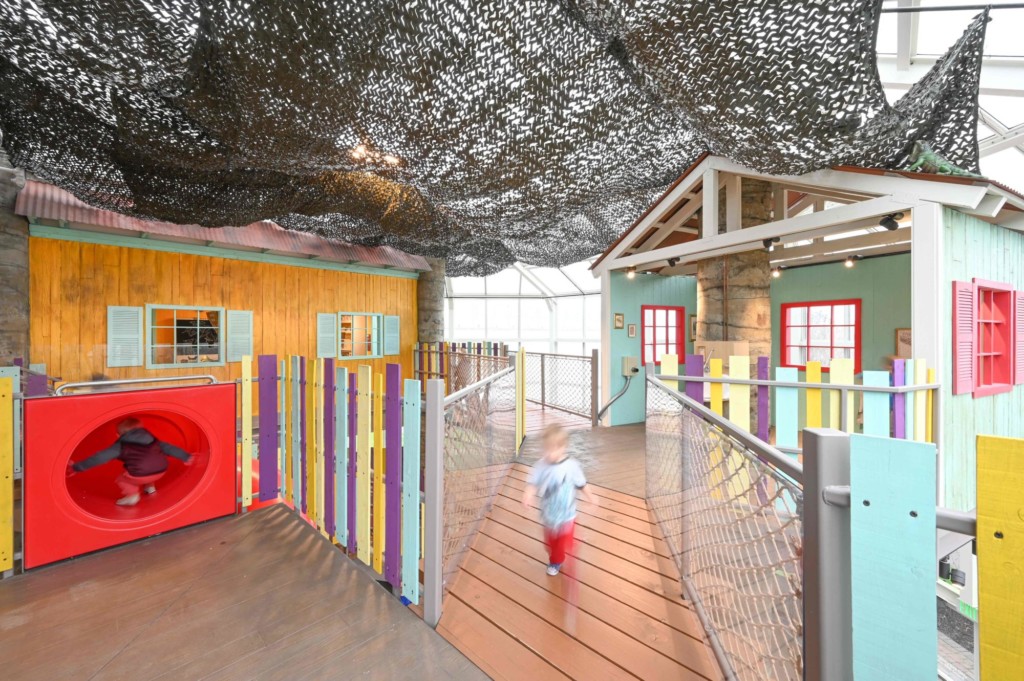
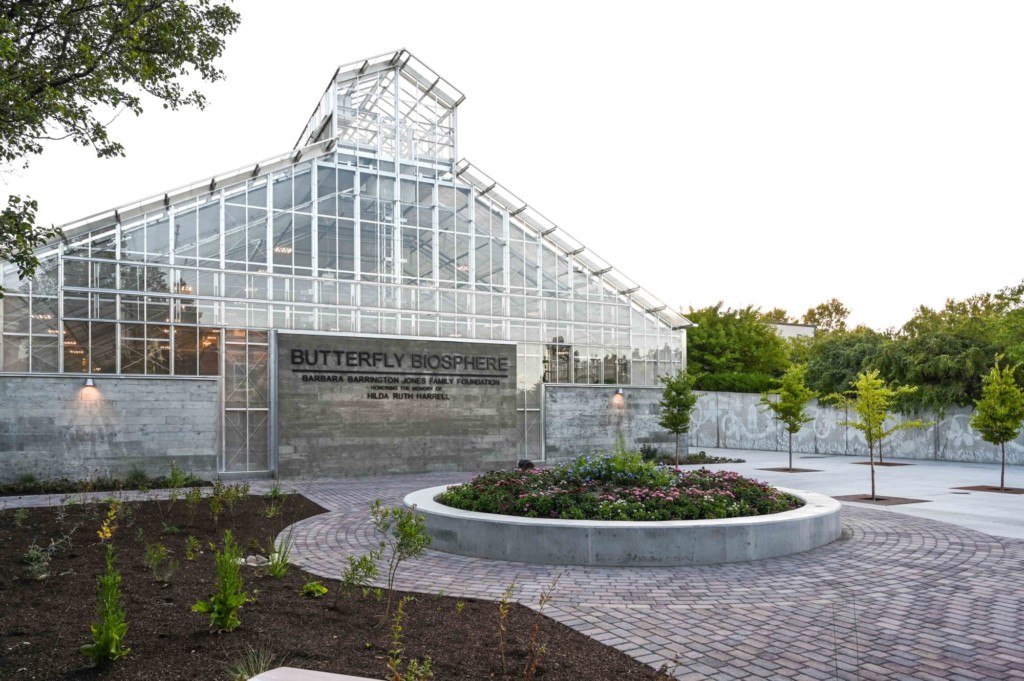
Construction of the Biosphere
Coordinating with specialty consultants and the contractor, the FFKR team met strict specifications by the USDA to limit the infestation and reproduction of over 100 non-native species. Precautions included air barriers between the lab space and any exits, and all exhibits, including the ‘fly zone,’ had to be tested for a completely airtight seal before the release of the insects.
Topics in a Desert
To maintain the constant temperature and humidity, atomized misters add moisture to the space through a building environment control system. Roof shading was added to control excessive heat in the summer, and a thin net barrier stops butterflies from reaching the cold glass walls in the winter. With the help of the exhibit consultants, we re-produced a world of the tropics with plants and native-looking geofoam rocks to complete the feel and mood to the environment.
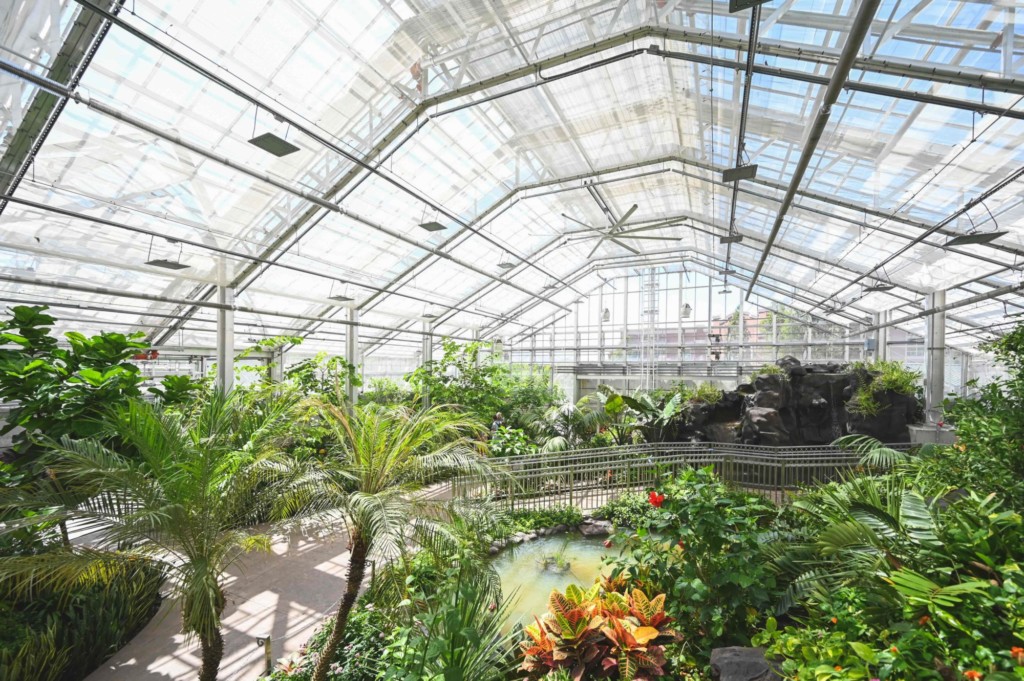
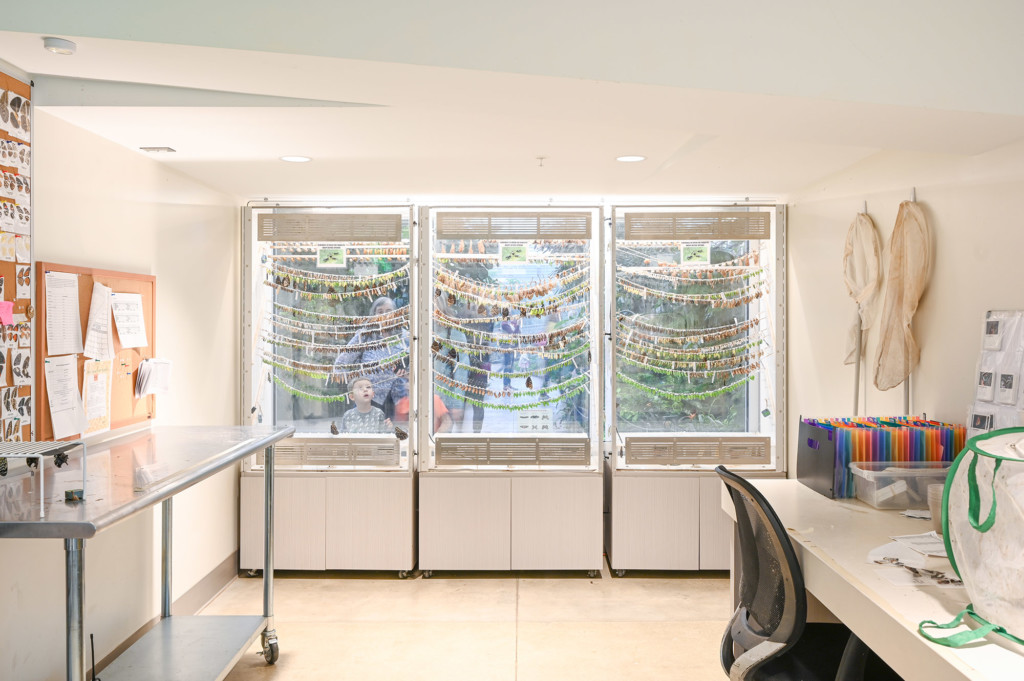
Hatching Chrysalis
The USDA regulates the purchase, transfer, importation, and life of non-native insects. Therefore, all butterflies are imported in their chrysalis state and hatched. The lab spaces and biosphere ecosystem were coordinated carefully with teams of biologists, and the owner’s in-house entomologist to refine details of the built environment and building systems
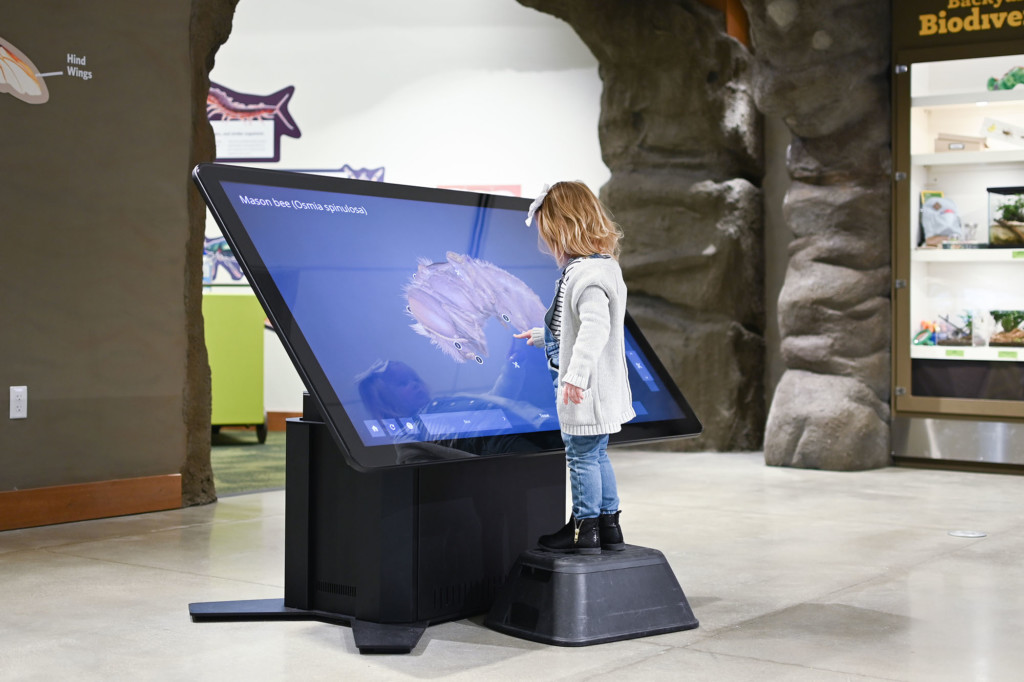
Interactive
Using interactive touch screens, kids can learn up close and detailed information about their favorite bugs.
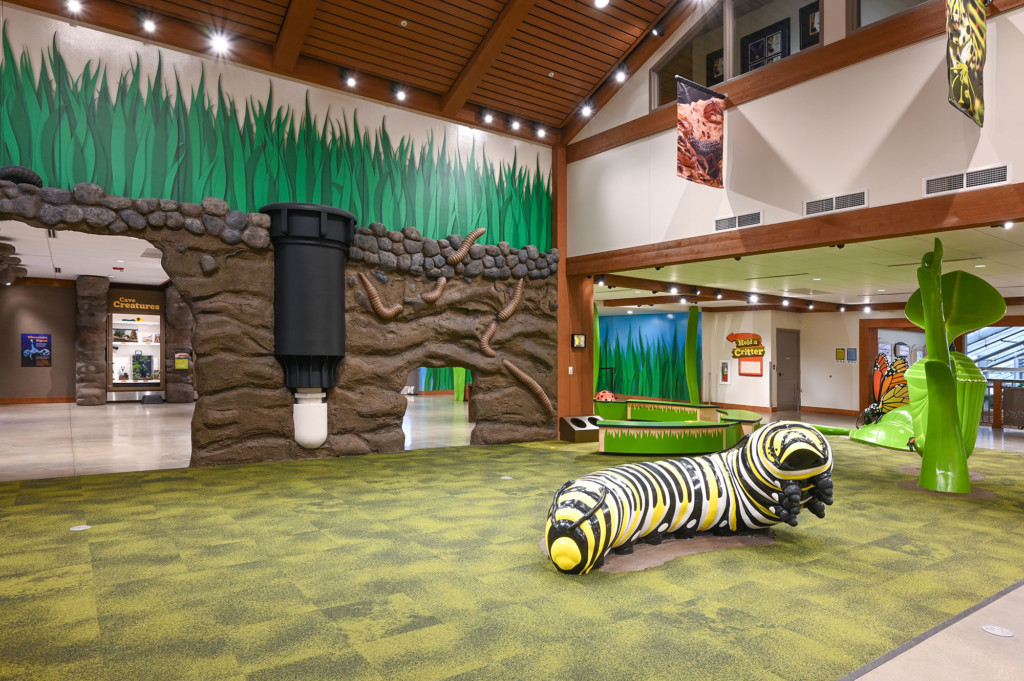
Life as an Insect
The exhibit spaces are designed to make users feel like they are an insect. In the ‘Discovery Zone,’ you can experience life as a worm in the cut-out slice of earth.
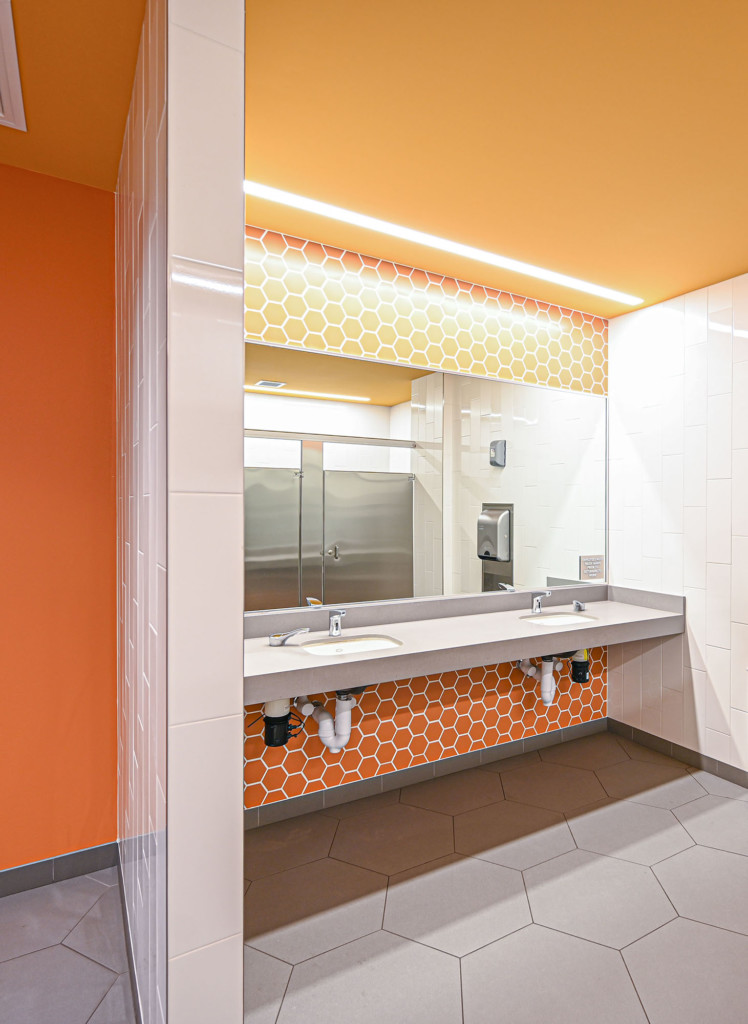
Visual Wayfinding
Applied patterns, shapes, and colors create easy-to-understand wayfinding for all ages. Each of the five insect-themed areas (Beatle, Bee, Ant, Spider, and Butterfly) were assigned a shape, primary and secondary color, and an abstract pattern that was used for corresponding graphics, art, and signage.
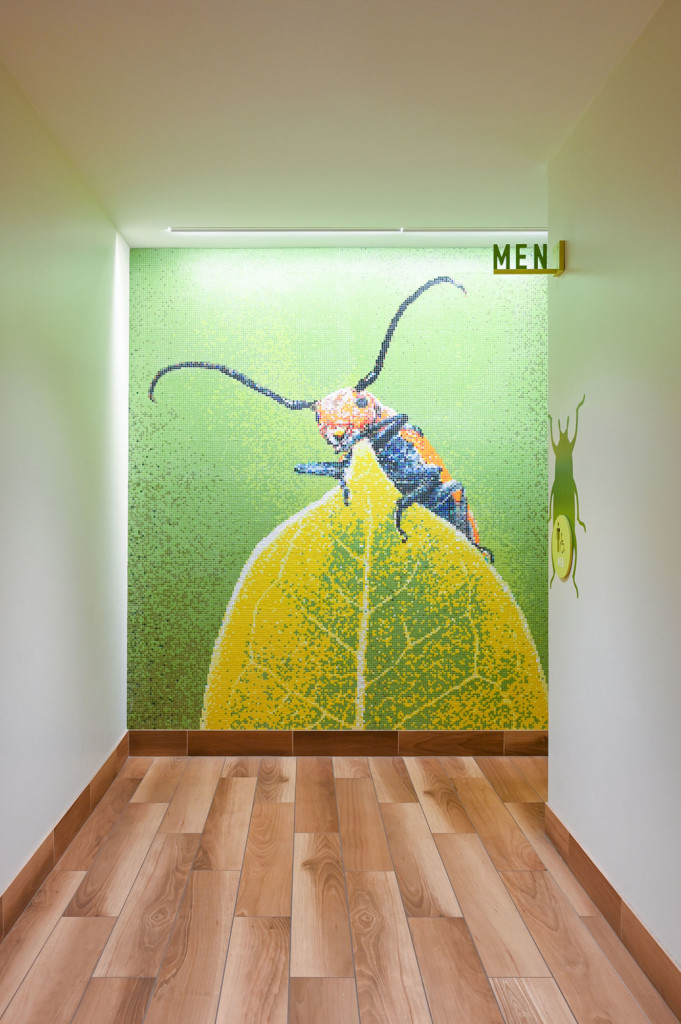
‘Look Closer’
Using visual cues with consistently and repetition aids patrons through the space. Following the “look closer” theme, several murals appear to be images of bugs, but at a closer look, the smaller individual ½-inch tiles that form the complete picture
